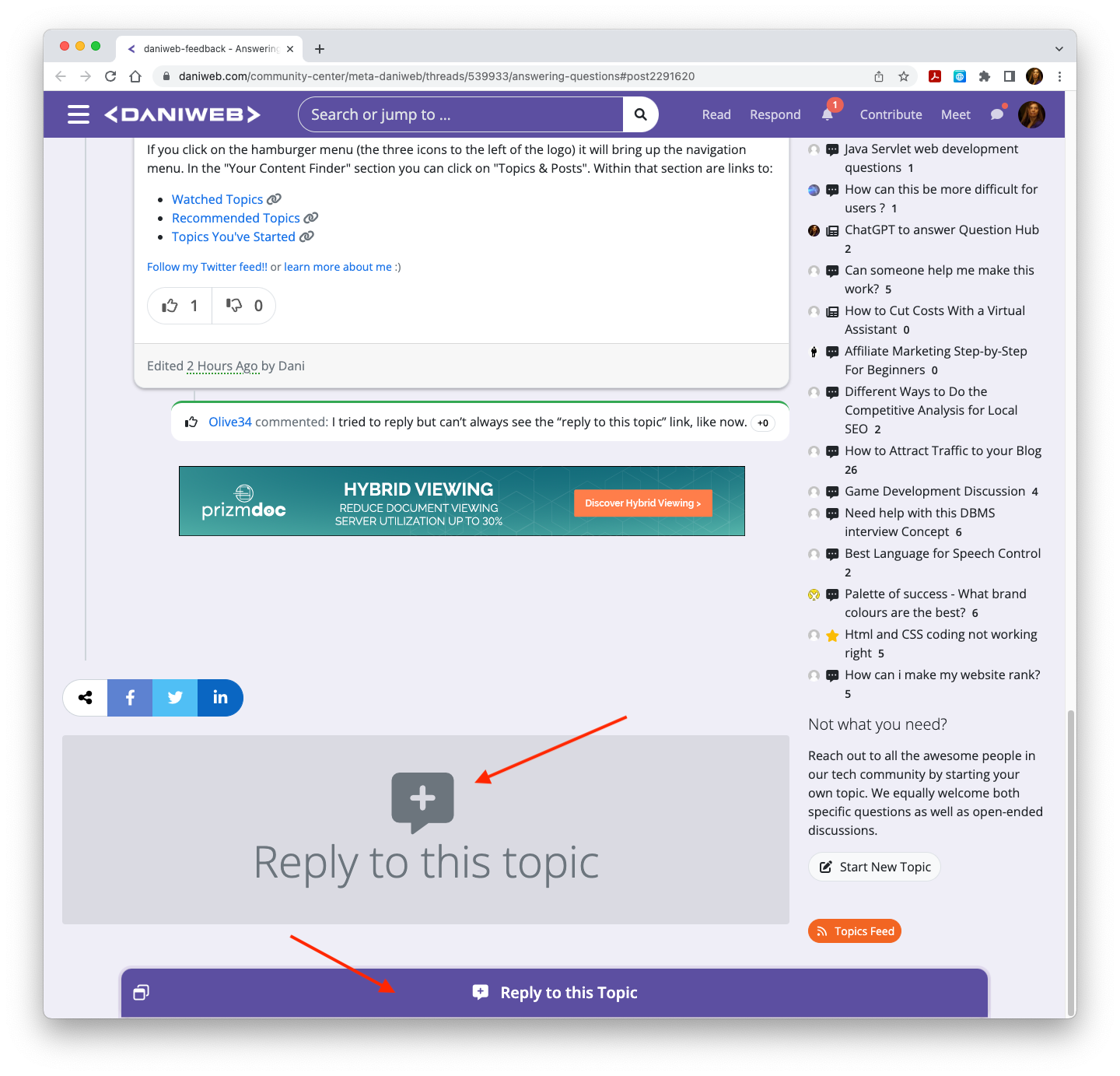I’m sure he will like that it’s procedural :)
Dani 4,645 The Queen of DaniWeb Administrator Featured Poster Premium Member
borobhaisab commented: You a 100% right there! Checking it oput now. +4
Dani 4,645 The Queen of DaniWeb Administrator Featured Poster Premium Member
Dani 4,645 The Queen of DaniWeb Administrator Featured Poster Premium Member
Dani 4,645 The Queen of DaniWeb Administrator Featured Poster Premium Member
Olive34 commented: I tried to reply but can’t always see the “reply to this topic” link, like now. +0
Dani 4,645 The Queen of DaniWeb Administrator Featured Poster Premium Member
Dani 4,645 The Queen of DaniWeb Administrator Featured Poster Premium Member
Dani 4,645 The Queen of DaniWeb Administrator Featured Poster Premium Member
Dani 4,645 The Queen of DaniWeb Administrator Featured Poster Premium Member
Dani 4,645 The Queen of DaniWeb Administrator Featured Poster Premium Member
Dani 4,645 The Queen of DaniWeb Administrator Featured Poster Premium Member
Dani 4,645 The Queen of DaniWeb Administrator Featured Poster Premium Member
Dani 4,645 The Queen of DaniWeb Administrator Featured Poster Premium Member
nancykhoo58 commented: Thanks! I got it. +0
Dani 4,645 The Queen of DaniWeb Administrator Featured Poster Premium Member
Dani 4,645 The Queen of DaniWeb Administrator Featured Poster Premium Member
Dani 4,645 The Queen of DaniWeb Administrator Featured Poster Premium Member
Dani 4,645 The Queen of DaniWeb Administrator Featured Poster Premium Member
Dani 4,645 The Queen of DaniWeb Administrator Featured Poster Premium Member
Dani 4,645 The Queen of DaniWeb Administrator Featured Poster Premium Member
Dani 4,645 The Queen of DaniWeb Administrator Featured Poster Premium Member
Dani 4,645 The Queen of DaniWeb Administrator Featured Poster Premium Member
Dani 4,645 The Queen of DaniWeb Administrator Featured Poster Premium Member
Dani 4,645 The Queen of DaniWeb Administrator Featured Poster Premium Member
Dani 4,645 The Queen of DaniWeb Administrator Featured Poster Premium Member
Dani 4,645 The Queen of DaniWeb Administrator Featured Poster Premium Member
Stefce commented: Yes that is correct it worked without symbols +6
Dani 4,645 The Queen of DaniWeb Administrator Featured Poster Premium Member
Dani 4,645 The Queen of DaniWeb Administrator Featured Poster Premium Member
Dani 4,645 The Queen of DaniWeb Administrator Featured Poster Premium Member
Dani 4,645 The Queen of DaniWeb Administrator Featured Poster Premium Member
Dani 4,645 The Queen of DaniWeb Administrator Featured Poster Premium Member
Dani 4,645 The Queen of DaniWeb Administrator Featured Poster Premium Member
Dani 4,645 The Queen of DaniWeb Administrator Featured Poster Premium Member
Dani 4,645 The Queen of DaniWeb Administrator Featured Poster Premium Member
Dani 4,645 The Queen of DaniWeb Administrator Featured Poster Premium Member
Dani 4,645 The Queen of DaniWeb Administrator Featured Poster Premium Member
Dani 4,645 The Queen of DaniWeb Administrator Featured Poster Premium Member
Dani 4,645 The Queen of DaniWeb Administrator Featured Poster Premium Member
Dani 4,645 The Queen of DaniWeb Administrator Featured Poster Premium Member
Dani 4,645 The Queen of DaniWeb Administrator Featured Poster Premium Member
Dani 4,645 The Queen of DaniWeb Administrator Featured Poster Premium Member
Dani 4,645 The Queen of DaniWeb Administrator Featured Poster Premium Member
Dani 4,645 The Queen of DaniWeb Administrator Featured Poster Premium Member
Dani 4,645 The Queen of DaniWeb Administrator Featured Poster Premium Member
Dani 4,645 The Queen of DaniWeb Administrator Featured Poster Premium Member
Dani 4,645 The Queen of DaniWeb Administrator Featured Poster Premium Member
Dani 4,645 The Queen of DaniWeb Administrator Featured Poster Premium Member
Dani 4,645 The Queen of DaniWeb Administrator Featured Poster Premium Member
Dani 4,645 The Queen of DaniWeb Administrator Featured Poster Premium Member
Dani 4,645 The Queen of DaniWeb Administrator Featured Poster Premium Member
Dani 4,645 The Queen of DaniWeb Administrator Featured Poster Premium Member
Dani 4,645 The Queen of DaniWeb Administrator Featured Poster Premium Member

